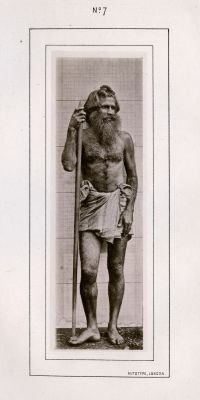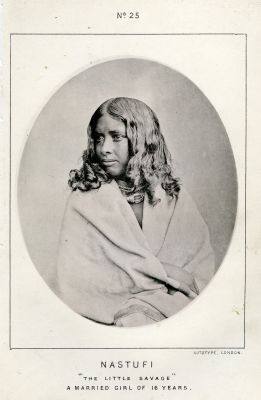
Title
West Portal, Church of St. RequierArtist
Ohm and Grossman (inventor)Publication
The Portfolio: an Artistic PeriodicalDate
1871Process
PhotocollographAtelier
Autotype Fine Art Co.Image Size
23 x 17.7 cm
This early variation of the collotype method invented by Max Gemoser in Germany used glass as a support layer. Gemoser called the process “photolithography.” Gemoser became associated with Ohm and Grossmann in Berlin, where it was then referred to as “lichtdruck.” Edward Bierstadt argues in an article that the method was overly complicated: “…instead of using the simple bichromated gelatin he added seventeen other substances.” Bierstadt then goes on to list all of them in the formula – Gum myrrh, Gum ammoniac, Liquorice root, Manna, Beet sugar, Milk sugar, Bichromate of potash, Bichromate of ammonia, Lupulin, Gum benzoin, Tolu balsam, Spirits of wine, Nitrate of silver, Iodide of cadmium, Iodide of zinc, Bromide of potassium, Gold solution, White of egg. These are used in seven solutions which are mixed together with the gelatin to form the sensitive layer. In October, 1869, the Autotype Company in London acquired the patent. [1]
From the text (page 135)… In the present number we place before our readers, in the view of the Church’ of St Riquier A near Abbeville, an example of a new system of printing possessing some singularly ingenious and interesting features. Photocollography is the name by which it is proposed to designate the process in question, the term indicating the colloid or gelatinous nature of the printing surface and the photogenic agency employed in its production. Some such term is necessary to distinguish this process or class of processes, for there are several of a strictly cognate character, from lithography or zincography to which they bear considerable analogy. Notwithstanding our intimate familiarity with the results of stone and zinc printing.
And (p. 138) In the brief space available for this notice, we are conscious of doing but scant justice either to the history of the principle involved, or the varied form of application it has obtained. Our immediate object is to explain how the very satisfactory nature prints of a fine architectural subject, printed in permanent ink by mechanical means, issued in our present number, are obtained. They are produced by the Autotype Fine Art Company, the photo-mechanical printing department being under the management of Messrs Sawyer and Bird, working under the patent of Messrs. Ohm and Grossman, to which we have adverted, with some of the modifications which earnest and ingenious workers invariably, effect in carrying out a novel principle. We need not here commend the fidelity of photography; we simply commend attention to the delicacy, force, and general quality of the impressions, which, designed by the sun, we here produce, with the facility of the printing press, in the enduring form, which has stood the test of centuries, of printers’ ink.
Reproduced / Exhibited
Hanson, David Checklist of photomechanical processes and printing 1825-1910, 2017 p. 58
References
[1] Hanson, David Checklist of photomechanical processes and printing 1825-1910, 2017
The Portfolio: an Artistic Periodical. vol. 2, 1871


